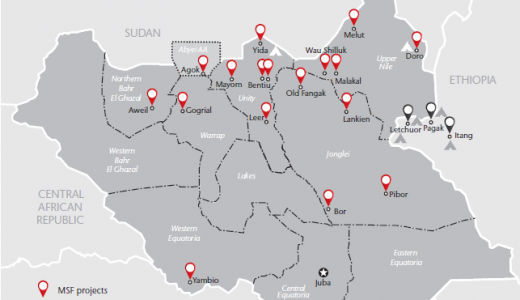By: Gabriel Garang Pioth
March 12, 2013 (SSNA) — It has become a common phenomenon across South Sudan for a patient who has malaria-typhoid like symptoms and went for blood test in their local pathology laboratory to be told ‘you have malaria-typhoid’. The term typhomalarial fever or malaria-typhoid fever has it is called in South Sudan was first coined by the United State Army in the mid-19th century. After thorough investigations into the authenticity of this new disease, nothing of such disease was found and the term just remains in the medical dictionary since then.
When the word malaria-typhoid is mentioned again in the 21st century, it makes people wonder whether the South Sudan medical professionals are still backwards or are they coning the poor people? It wouldn’t be a surprise to find unscrupulous medical professionals who want to capitalise on the fear of malaria and typhoid fever in South Sudan to get quick bucks. So how would you make sure you are not wrongly diagnosed next time you visit your local pathology laboratory?
First, the prevalence, agents and mode of transmission of these two diseases are somewhat different. Typhoid fever is common in countries where sanitation and majority of the population are poor whereas malaria is mostly endemic in the tropics and sub-tropical areas. This means that the malaria incidences at this time of the year would be common in swampy areas and along the river Nile or other major rivers in South Sudan. While Typhoid Fever is caused by salmonella (S.) species, malaria is caused by plasmodium species (protozoan). The mode of transmission of salmonella species is through the consumption of faecal contaminated food or water by an individual. Conversely, the malaria parasite (plasmodium species) enters the person’s blood system via the female anopheles mosquito bite, blood transfusion, organs transplant or sharing of needle/syringe contaminated with blood from infected person.
Secondly, both diseases have different signs and symptoms. The signs and symptoms of typhoid fever include high fever, chills, cough, watery diarrhoea, bradycardia, malaise and low blood pressure. It often occurs in overcrowded, flooded and unhygienic areas where sanitation system is compromised. On the other hands, symptoms of malaria include high fever, chills, sweats, headaches, nausea and vomiting, body aches and general malaise. The symptoms of malaria occur in three stages: (i) cold stage (shivering chill); (ii) hot stage (fever, headaches, vomiting) and (iii) sweating stage (sweats and malaise/tiredness). Malaria and typhoid fever only share high fever, generalised aches and malaise. These are the things you should ask yourself if you got them next time you are told ‘you have malaria-typhoid’.
The third point of difference between the two diseases lies in the laboratory test. The gold standard test for Malaria parasite is thick and thin blood film, which is relatively simple, quick and cheaper to perform. It takes less than 20 minutes from taking a drop of blood from a finger prick (puncture) onto the slide and staining it with Giemsa stain to the viewing of the stained slide under the microscope to find out the diagnosis. In contrast, the widely use test for salmonella species in sub-Saharan Africa is a Widal agglutination test. This laboratory technique lacks: (i) reproducibility (you cannot obtain almost the same results if you repeat it next time or perform it in another lab); (ii) precision and sensitivity due to cross-reactivity of Widal agglutinins with other bacterial antigens and (iii) established reference range that fit the population being tested. The fact that the laboratory scientists in South Sudan get the results of typhoid fever in a single day in their small laboratories says two things: either they have advanced testing equipment or use presumptive diagnosis. There are incidences in which a person has been continuously diagnosed with malaria-typhoid while the signs and symptoms indicate the patient may have anaemia which he/she might have acquired from chronic malaria.
The current and accurate laboratory techniques for isolating Salmonella enterica serotype (S. typhi) in blood, urine or stool cultures is expensive and normally take about 3 to 4 days to get the results. It also requires advanced training and equipment which are beyond the capacity of majority of local laboratories in South Sudan.
Lastly, the rate at which the patients are being diagnosed (and its concomitant administration of wrong medications) with malaria-typhoid fever in South Sudan leaves a lot to be admired. Also the community seemed to have resigned into the belief that there is a malaria-typhoid fever outbreak or endemic in South Sudan. Since there are no rapid and accurate alternatives around, this trend is likely to cause more misdiagnosis and deplete enormous resources from the poor families for unforeseeable future. In addition, it will lead to the emergence of new strains of salmonella enterica serotype typhi, which areresistant to common antibiotics.
It is therefore up to the individuals to check their background and status before accepting the diagnosis. The Republic of South Sudan Ministry of Health should also ensure that there are proper and enforceable quality assurance practices in all laboratories across South Sudan states. There should also be criminal and financial penalties or loss of accreditation for the laboratories that give wrong and misleading laboratory results to the patients.
The author is a South Sudanese who reside in Australia. He can be contacted by email: [email protected].

